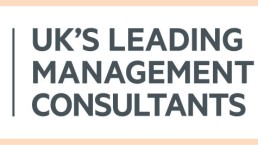Delivering greater procurement efficiencies for a construction company
The issue
- £1billion division split into 6 semi-autonomous business units, spending £450m per annum on materials and sub-contracted services
- Each business unit under revenue and margin pressure especially those dependant on public sector work
- By re-establishing good procurement practices a modest 3% savings target was agreed upon, the stretch being that the full cash saving had to be delivered in-year
- No single picture of procurement spend or performance compared to the external market
- Procurement & supply chain savings were already baked into business unit budgets and there was pressure from plc to deliver over and above this
Solution
- Created a definitive ‘spend cube’ and with it a single set of numbers
- Completed a top-down and bottom-up analysis of spend at the detailed category/supplier level and agreed impactable spend
- Created and executed a prioritised implementation plan closely monitoring and recording the benefits as they are realised
- Redesigned the P&SC organisation bringing in the necessary skills and expertise as required
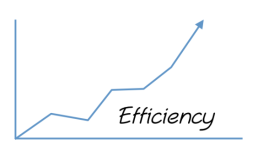
The results
- In-year cash savings of £8million with an exit run rate of £10million per annum
- New operating model fully installed and driving benefits (sustainability)
- Benefits fully traceable within business unit P&L
An award-winning team







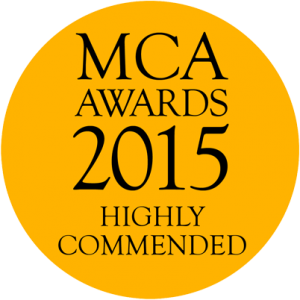


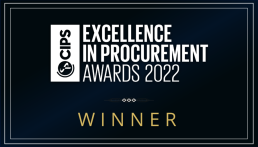
CONTACT US TO FIND OUT HOW WE CAN HELP
Operational excellence at a key site for a marine engineering products division of a global organisation
The issue
- An engineering, fabrication & assembly facility supplying deck machinery equipment to the marine industry, was severely underinvested in, with old facilities & equipment and remote from Group HQ
- Seen as a failing site with internal customers losing trust in its ability to deliver
- Disconnected planning and production functions causing late delivery and high costs
- No effective performance management system in place to drive improvements
- Very high inventories due to a lack of control of demand and production priorities
- Intention to transfer products in from Scandinavia and establish a low-cost supply centre of excellence
Solution
- Evaluation of the primary issues and development of a site transformation plan
- Focused on OTIF as the critical performance metric; established cross-functional planning with short interval control to manage demand and delivery to promise
- Improved data integrity, reset planning parameters and re-established ERP system use
- Re-organised operations to improve flow through the factory and to establish schedule adherence
- Implemented practical lean operational disciplines centred around PDCA
- Addressed excess inventory, control of stock, kitting and warehousing operations
- Established effective performance management across all functions
- Coached management to develop capability and establish sustainable improvement

The results
- Delivery performance improvement OTIF from 14% to 95% within six months
- 45% reduction of inventories within one year
- Jump in recovered factory revenues from effective demand management & increased delivery to commitments
- Engaged and productive workforce with a clear understanding of what was required of them
- Successful capital upgrade completed while continuing to supply
- Site was established as a Centre of Excellence for deck machinery and achieved Group award for excellence
- Asked to repeat a similar exercise at another site in the Far East
An award-winning team











CONTACT US TO FIND OUT HOW WE CAN HELP
Tristan Hollis
Managing Consultant
+44 (0)1653 628596
Tristan has a professional background in asset management, multi-disciplinary engineering, and construction (including management leadership), across the Transport, Utilities, and Financial Services sectors. He has further experience in strategy, operating model design, and digital transformation.
He brings a holistic view to a project, combining big-picture strategic thinking with a detailed and practical understanding of real-world situations.
Tristan holds an MBA and a First-Class MEng degree in Civil Engineering.
“I am highly analytical and enjoy working in fast-paced environments, across critical functions to deliver value for clients. The focus of much of my more recent work has been innovation and sustainability. I thrive when faced with a real challenge.”
CONTACT US TO FIND OUT HOW WE CAN HELP
Pav Sanghera

Consultant
+44 (0)1653 628596
Pav is a dedicated consultant with over four years of experience in management consulting, accounting and auditing, primarily serving clients in the financial services sector.
He has a successful track record in delivering in projects across Procurement, Sustainability and Operating Model design. Leveraging a combination of his technical skills and financial acumen, he is able to assist his clients to tackle complex issues and achieve tangible results.
Pav holds a BSc in Economics from the University of Surrey.
CONTACT US TO FIND OUT HOW WE CAN HELP
Milo Eadie
Senior Consultant
+44 (0)1653 628596
Milo is a Senior Consultant experienced in strategy development, delivering large-scale transformation programmes, crafting digital innovations, and providing clients with in-depth analytical insights.
Milo holds a First-Class MEng degree in Engineering Design from the University of Bristol. With a background as an entrepreneur, and a mechanical design engineer in the nuclear sector, he combines technical expertise with an innovative mindset and broad management approaches. He has applied his strategic and implementation skills across various complex sectors and projects, including global clients in Energy Transition, capital infrastructure, construction, and transportation.
In 2023, Milo was shortlisted for the Management Consulting Association’s (MCA) Rising Star Award, recognising the impactful solutions he developed for his clients.
CONTACT US TO FIND OUT HOW WE CAN HELP
Hip & knee implant manufacturers – The value creation opportunity
If hip and knee implant manufacturers want to stay relevant, and “move the needle” on value creation, they need to play big or go home!
An aging (ageing) population is driving absolute sales, but over the past few years, primary hip and knee procedures have become commoditised, which has resulted in margins being squeezed for both hospital providers and implant manufacturers.
Implant manufacturers have an opportunity to transform their business model, away from traditional “box shifting” product selling (driven by monthly sales targets) to a high value add, high margin managed service proposition, where multi-year partnerships are formed with hospital providers. Implant manufacturers need to provide additional services along the value chain, especially as health systems move towards value-based care models.
The Value Creation Opportunity
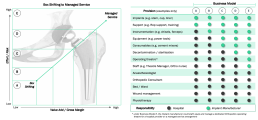
About the author
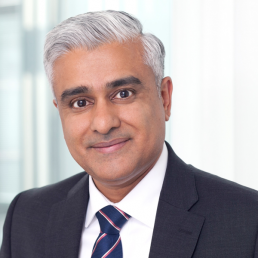
Chetan Trivedi
I lead Healthcare at Curzon Consulting.
For over 15 years I have supported Healthcare payers, providers and medical devices companies on strategy, operational improvement and digital transformation engagements across the UK, wider Europe, Middle East, US, India and Canada.
I am deeply passionate about improving health outcomes, safety and quality of life for patients.
CONTACT US TO FIND OUT HOW WE CAN HELP
Delivering business turnaround
The issue
- The UK business of a global construction materials manufacturer had been losing money for several years due to inefficient operations and declining sales in an industry sector experiencing extremely challenging times.
- A full business review and improvement plan were required to stabilise the business and address the financial performance.
- Significant cost reduction efforts had already been made to offset the declining sales and lower margins, but the business was continuing to lose money.
- Sales lacked the basic tools and capabilities to compete effectively and operations were poorly managed resulting in over-production, an inefficient organisation and poor working practices.
- The leadership team was highly dysfunctional and lacked the capability to define and execute a plan to address the situation.
Solution
- Undertook a full situational analysis of the business operations and identified changes required to reverse the performance trend
- A comprehensive change programme was designed and implemented with the full involvement of the business management team
- Recognising that the current actions were primarily to address the initial objective of eliminating the business losses, a parallel stream of work focused on the market and development of the future strategy for the business
- This dovetailed with the reorganisation of the commercial functions and outlined the business’s future journey to go beyond a break-even situation and achieve acceptable returns

The results
- The programme had a significant impact on the business across all areas of the value chain and delivered a sustainable bottom-line improvement of over £5m p.a in 12 months.
- In addition to the delivered cost optimisation actions the re-focusing and capability development work with the sales team secured a contract renewal with three principal customers and the acquisition of a new major account and stemmed the loss of any further business.
- The new ways of working that focus on using sound management information to run the business and to action issues have taken root across the organisation. Decision making improved and continuous improvement is becoming established.
- The Group Executive sees the step change in performance that was achieved in the timeframe as the most successful intervention of its kind across the portfolio in recent years.
An award-winning team











CONTACT US TO FIND OUT HOW WE CAN HELP
Applying lean principles to a deliver a step change in performance in a construction environment
The issue
- Over a year behind plan due to technical difficulties and the inability to establish an effective delivery model
- Significant efforts were made to find a workable engineering solution but continuing to fail in meeting planned delivery cycle times
- Accruing significant non-recoverable costs on extending leases of expensive marine engineering plant
- Accepted reality that most delays were either due to weather or one-off events and therefore non-addressable
- Reliant on experienced agents, managers and foremen to manage communication without the need for much structure or formality
- The aim was to achieve a repeatable 14-day ‘production’ cycle, from a starting point of 19 days as the demonstrated best achievement
Solution
Working with the project team to identify and implement:
- An optimal production process with defined task times against which the project could plan, execute and measure performance
- Introduction of cross-functional short-range planning discipline to improve visibility and reduce the instances of unplanned stoppages through poor communication and lack of coordination
- Strengthening the cascade communications to the front-line teams to ensure the right plan was being executed
- Prioritisation of the process improvement pipeline to accelerate the implementation of the highest impact solutions
- Establishing adherence to a standard process and course-correcting back to the agreed sequence if unplanned events caused the deviation
- Previously each cycle had effectively been ‘bespoke’
- Using close monitoring to highlight avoidable downtime and to identify operational fixes, e.g deck layout standardisation
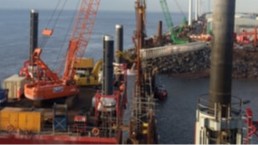
The results
-
Cycle time was compressed to less than the on-target 14-day sequence on a sustained basis, and as low as 10 days, with associated cost savings of ~£0.5m per cycle.
Having the Curzon team ‘embedded’ within the project proved effective in understanding the complexities and challenges of the operating environment. Pragmatic and tailored interventions and a ‘test and learn’ approach encouraged adoption and ownership.
An award-winning team











CONTACT US TO FIND OUT HOW WE CAN HELP
Why renewable energy is fuelling investor interest
As an asset class, renewable energy has matured dramatically over the past two decades. It has gone from being seen as an alternative culture to having huge investment potential. At the same time, traditional investment norms are changing and not just because of the evolving sustainability mega-trend. In recent years, investment managers have increased their allocations to the broader real assets sector with growing numbers classifying infrastructure and real estate as “real assets”.
Solar power does not pollute the air with greenhouse gases and is noise-free to be used for residential purposes. Solar opportunities are available at various scales, i.e. for households and large business ventures providing power to the grid. Solar panels are the fastest-growing renewable energy option, thanks to falling costs and increasing investment. Their easy installation and “low emissions” are environmentally friendly.
Wind turbine power will be an increasingly compelling longer-term investment due to increasing urbanisation and population growth, leading to higher electricity demand. Technological progress with relative cost advantages for renewable energies and an improved regulatory environment (social and political support) motivates businesses to manufacture wind turbines.
Get in touch with Andrew to discuss
CONTACT US TO FIND OUT HOW WE CAN HELP
Nothing found.
Sign up to our insights
The Future of Work in Financial Services
The last 15 months had seismic impacts on workforces and ways of working
Banks and insurers weren’t prepared for the pandemic – within days nearly every employee was working from home, all of the time. The initial response was crisis-mode transferral of existing activities, processes and tools to remote – with minimal adaptation.
Most organisations surprised themselves at how quickly this was achieved and asked why they couldn’t make change happen as fast outside of a crisis.
Rises in workforce productivity were reported (less evidenced), but this was partly driven by fear of job loss.
Homeworking conditions varied enormously, with many people dealing with cramped, noisy environments, unreliable internet connectivity, and competing childcare and work demands
Protracted home-working suited some but caused a widespread decline in mental and physical wellbeing for others*, particularly in larger households:
- 46% taking less exercise and 39% developing musculoskeletal problems
- 59% finding it harder to switch off from work and 37% reporting disturbed sleep
- 67% feeling less connected to or isolated from colleagues
- 41% of those living in households with 3+ people think working from home is worse for their health and wellbeing, vs 29% of those living on their own and 24% of those living with just their partner
Business leaders had to respond to a wave of 'here & now' imperatives
How to:
- Immediately ensure operational resilience and prioritise access for those who most needed service
- Adapt and mobilise rapidly to deliver Government-backed support scheme (BBLS, CBILS)
- Avoid customer resentment or loss as a consequence of exceptional service constraints – e.g. motor and health insurers compensating policyholders for reduced need to claim or ability to fulfil claims
- Best minimised disruption and restore service quality for all partners and customers
- Accelerate process and service digitisation to enable all this, e.g. increased chatbot use to manage contact demand
- Provision to manage significant financial risk, e.g. bad loans for banks and increased claims volumes for Life insurers
- Minimise furlough and redundancies and keep colleague morale and motivation high
- Ensure a safe, confident return to the workplace during those periods when permitted/required to
Expansive, strategic initiatives – like progress on sustainability, operating model and core technology change – were largely relegated down the agenda
Today’s focus is on transitioning to new ways of working which will best advantage organisations and colleagues after restrictions end
- The Government requirement to work from home whenever possible lifts on July 19th
- Though uncertainty continues with some senior scientific advisers urging continued working from home over the summer
- Return to the workplace is underway within Financial Services albeit under varying conditions, speeds and guidance
- Lots has been done on scenarios and plans for what the new ways of working will look like, and how they will be better…
But how ready are banks and insurers to execute their plans and take full advantage of the many opportunities the transition offers?
Visions of the Future of Work vary, and the best solution to many implementation complexities is not yet known
Simplistically, strategies divide between three broad options
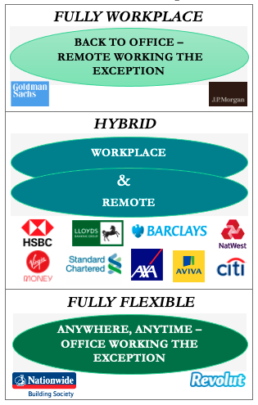
But one size won’t fit all
There are multiple work ‘personae’ with different required and desired ways of working:
- e.g. in the wealth management division of a bank, traders may be encouraged back to the office full time…
- where, Ops and Technology colleagues shift to a 1:3:1 week [1 day in the office, 3 at home, 1 flexible]
- while private banking account managers go to fully flexible
Many questions still need working through before the optimised hybrid model is found such as:
- What will the office be used for on return – which tasks and activities need to be conducted there and what changes in office design/functionality will best support those?
- What and how should policies flex to deal with exceptions, e.g. for people with lower comfort levels about returning to office-based or more cautious views of ongoing Covid risks?
- Where and how should front/middle/back-office processes and controls differ between the office and home?
- Where and why should this prompt a reshuffle of roles, interfaces, activities to maximise performance?
- Do certain roles no longer need to be attached to a site/location? E.g. could a UK job be done 100% from home in France?
- How to ensure similarity between home and office experience where it matters to avoid some colleagues feeling disconnected, and to bolster inclusivity?
- To what extent will savings from reduced office space outweigh costs of standardising/upgrading home working equipment, furniture, and technology?
The challenge is now to successfully translate the vision into the new operating and cultural reality… and deliver maximum benefit from it
The Future of Work challenge facing organisations now is how to actually ‘make it happen’
Moving to action is the hard part, and in our view, the effort needs two strongly coordinated legs:
- Piloting the practical changes needed to establish and embed target new ways of working – testing/learning and refining at pace to best effect across the entire business, attuned to the needs of different work personae
- Designing and delivering deeper change that goes beyond just re-configuring office space – to create maximum value by converting the breadth and depth of opportunities opened up by the FoW, so…
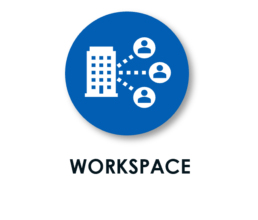
- Optimise and flex office access and space in synch with hybrid working needs
- Perfect the work-at-home equipped-ness and experience
- Convert cost-savings from real estate footprint and usage reduction
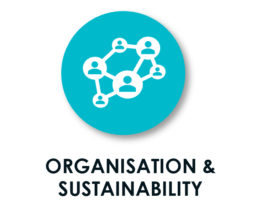
- Organise across functions and silos for hybrid working effectiveness
- Link WoW changes to delivery of CN0 & cost optimisation goals
- Raise employee engagement as a purpose-based organisation
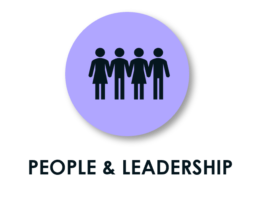
- Improve management, coaching, motivational techniques and controls to bridge in/out office split
- Skills & behaviours ‘upgrade’ for higher performance and positive culture change
- Enrich diversity and recruit the best talent from a wider geography
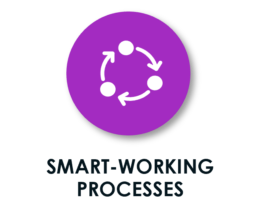
- Re-think routine activities for maximum efficiency
- Introduce smarter working processes to boost productivity
- Drive those pandemic customer behaviours (like increased digital payments) which boost productivity and enhance CX
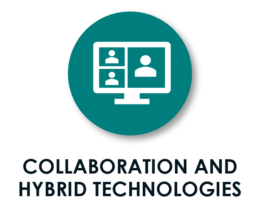
- Adopt best collaboration tools and AI/automation technology to improve work quality, pace, output
- Clear out under-utilised or no longer fit for purpose office collaboration / workflow tools
In delivering holistic change there is a golden opportunity to redefine the employee value proposition and enhance culture
Holistic change approach to the Future of Work
Designing to most compelling EVP for the future
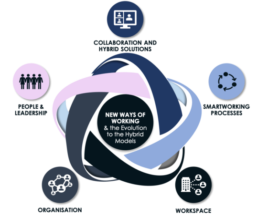
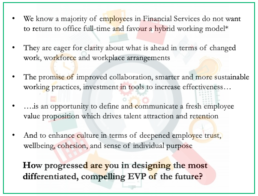
The human and commercial benefits of getting this right are BIG
Banking and insurance have amongst the highest remote working potential of any sector, with around three-quarters of time spent on activities that can be conducted remotely, without the loss of productivity*
Indicate scale benefits of transitioning to 50% remote working are £10M annual savings per 1,000 employees

There are important human capital and reputational /social responsibility benefits to derive from improved employee experience and accelerated reduction in the organisation’s carbon footprint***
* Source McKinsey / What’s Next for Remote Working
** Source Global Workplace Analytics, Amazon, SHRM, Deloitte – average annual savings include the cost of office rent, electricity, water, insurance supplies. Savings based on full-time employees with compatible jobs telecommuting 20 hrs/wk. Assumes 2,000 hour work year and £70/hr labour rate
*** Source Carbon Trust / Homeworking
So… the questions we think you need to be able to answer are…
Strategy
Does your FoW vision and ambition reach far enough?
Is your FoW strategy holistic and clear on what benefits the new ways of working should deliver, in terms of
- human capital
- culture change
- productivity
- operational efficiency
- customer experience
- cost optimisation
- carbon reduction
How robust is the supporting business case and rationale?
Change Design
Do change designs have the necessary sensitivity and granularity at policy, process, controls and performance management levels? Do they have
- defined rules and variability on when in-person presence is required by specific roles, activity mixes and situations
- mitigations of risk of accentuating inequalities and creating new psychological or emotional stresses amongst employees
Test – Learn – Optimise
What will it take to pilot, refine and embed the transition effort successfully and at pace?
Enablement
What needs to be achieved to ensure the organisation and people are ready to adopt the new ways of working?
Have you identified/selected the optimal system, technology and data solutions to enable the hybrid working model?
Benefit Capture
To what degree can you be confident you have the right implementation plans, measures and capabilities to realise the target model and benefits?
We would welcome a discussion to understand where you are in moving from visioning to delivering FoW and which questions matter most to you, and to explore where Curzon’s capabilities may be relevant to your needs







